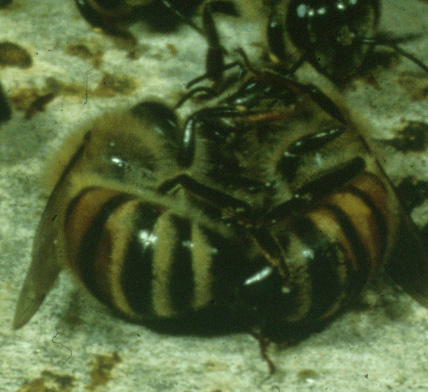
Nestmate discrimination in eusocial insects, including the honey bees, Apis mellifera, pictured here, relies on odor differences between workers from different colonies. A guard bee attacks a bee from another colony, preventing it from entering the guard's nest.
Virtually all terrestrial organisms are covered with a mixture of hydrocarbons. The waxy or oily coating of hydrocarbons keeps water in, so the organism doesn't dessicate. Because the blend of hydrocarbons can vary without interfering with its anti-dessication function, it provides a perfect tool for identifying individuals, or groups of animals.
In most eusocial insects odors are blended among colony members, so that all colony members smell alike. In the honey bee the wax comb in the nest plays an intermediary role; because all bees in the nest walk around on the same comb, they all smell the same. In paper wasps the nest plays a similar, intermediary, role. And, in at least some ants, the workers' postpharyngeal glands play a key role in the development of a unified chemical recognition signal in the colony.